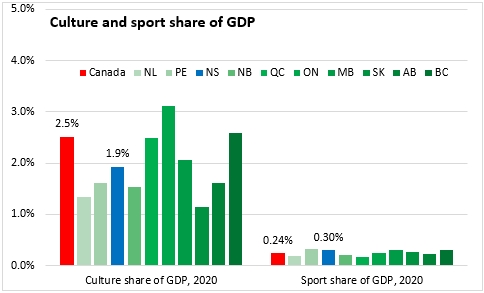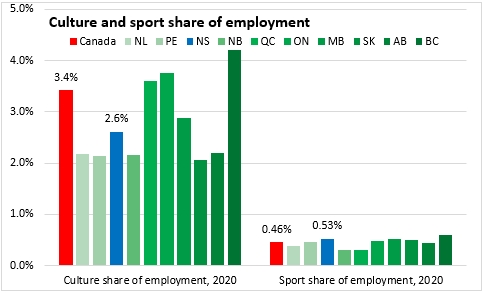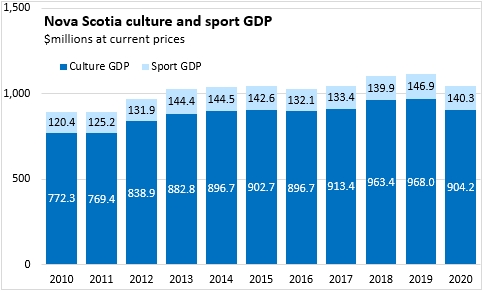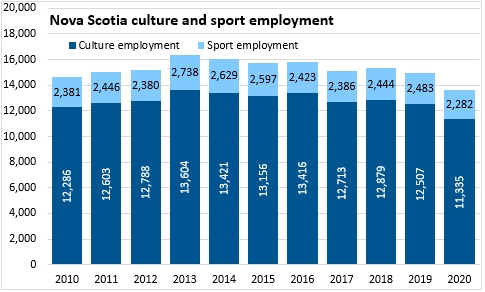The Economics and Statistics Division maintains archives of previous publications for accountability purposes, but makes no updates to keep these documents current with the latest data revisions from Statistics Canada. As a result, information in older documents may not be accurate. Please exercise caution when referring to older documents. For the latest information and historical data, please contact the individual listed to the right.
<--- Return to Archive
For additional information relating to this article, please contact:
June 02, 2022CULTURE AND SPORT INDICATORS, 2020 Statistics Canada has updated indicators of Canada's culture and sport activities for 2020. Many of these activities were directly and substantially affected by COVID-19 restrictions as they involve extended close contact in crowded settings. With these restrictions on culture and sport activities, GDP from production of culture products contracted by 6.6% in Nova Scotia (-6.0% nationally) while GDP from production of sport products was down 4.5% (-13.0% nationally). The largest contraction in culture GDP and sport GDP was in Alberta. The smallest contraction in culture GDP was in New Brunswick while the smallest contraction in sport GDP was in Prince Edward Island.

Production of culture and sport products are labour intensive. Employment in culture products contracted 9.4% in Nova Scotia in 2020 (-10.6% nationally) while sport employment was down 8.1% (-17.2% nationally). The largest contractions were in Alberta while the smallest contraction in culture employment was in New Brunswick and the smallest contraction in sport employment was in Prince Edward Island.

Despite these contractions, Nova Scotia's production of culture products generated $904.2 million in GDP at current prices. This was 1.9% of Nova Scotia's nominal GDP. GDP from sport in Nova Scotia was $140.9 million; 0.30% of provincial GDP.
Nationally, culture accounted for 2.5% of GDP with the largest shares in Ontario, Quebec and British Columbia. Culture as a share of GDP was lowest in Saskatchewan. National sport GDP was 0.24% of the total, with the largest share in Prince Edward Island and the lowest share in Quebec.

Culture accounted for 2.6% of employment in Nova Scotia in 2020 (3.4% nationally) while sport accounted for 0.53% of employment in 2020. Across Canada, British Columbia culture and sport activities each accounted for the highest share of employment. Culture accounted for the lowest share of employment in Saskatchewan while sport accounted for the lowest share of employment in New Brunswick and Quebec.

The contraction in Nova Scotia's culture and sport GDP reverses gains made in the two years prior to the start of the pandemic.

Employment in culture and sport production had been declining prior to the start of the pandemic. Pandemic-related restrictions accelerated this employment loss in 2020.

Notes: culture and sport share of GDP are calculated using GDP by income, adjusted for taxes less subsidies on products and imports; employment shares calculated using job totals from labour productivity tables
Source: Statistics Canada. Table 36-10-0452-01 Culture and sport indicators by domain and sub-domain, by province and territory, product perspective (x 1,000); Table 36-10-0221-01 Gross domestic product, income-based, provincial and territorial, annual (x 1,000,000); Table 36-10-0480-01 Labour productivity and related measures by business sector industry and by non-commercial activity consistent with the industry accounts
<--- Return to Archive